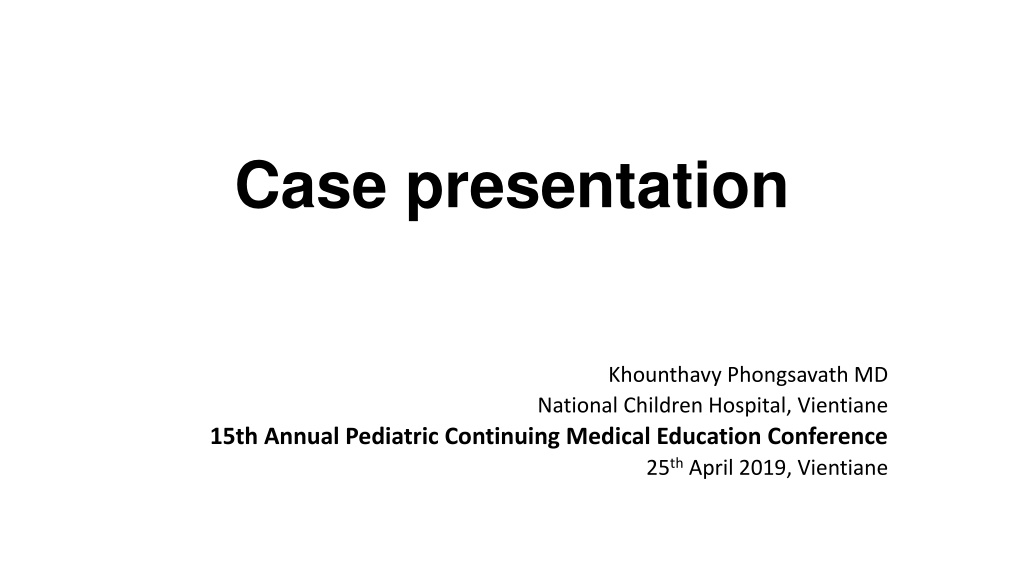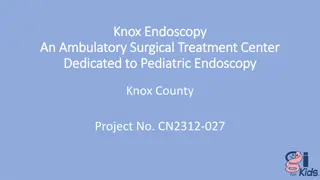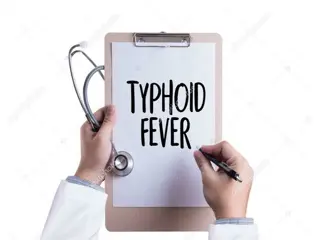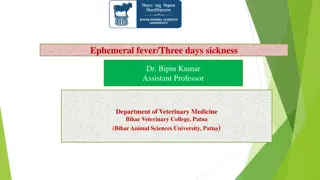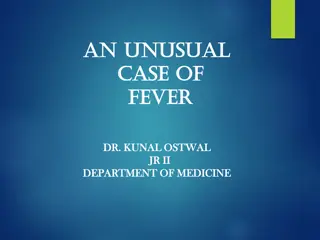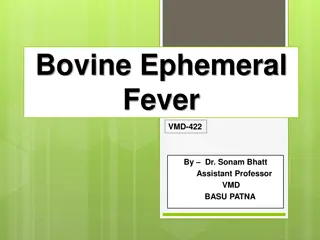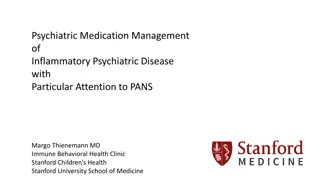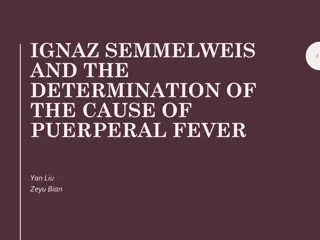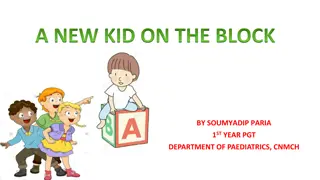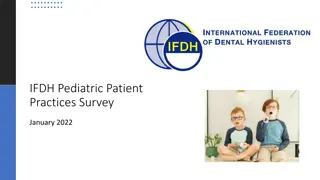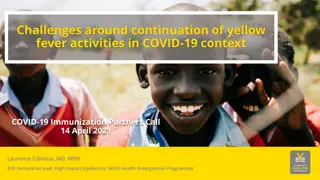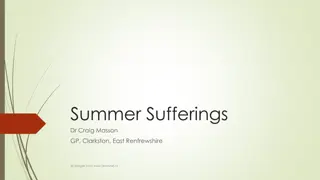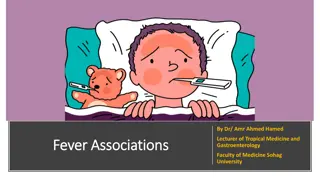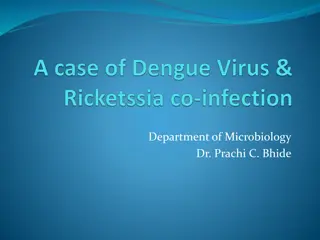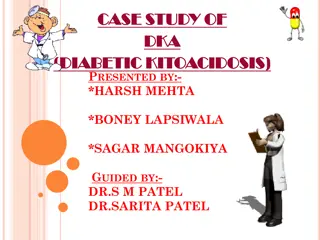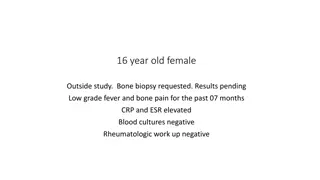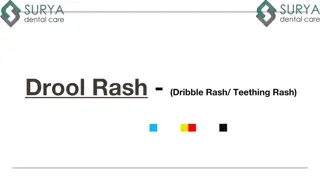Pediatric Case Presentation: Fever and Rash in a 3-Year-Old Patient
A 3-year-old female presented with fever, rash, cough, vomiting, diarrhea, and dyspnea. History revealed incomplete immunization and household fever cases. Physical exam showed tachycardia, respiratory distress, rash, and other symptoms. Past medical history indicated normal development and perinatal period. Further evaluation and management are required for this pediatric patient.
Download Presentation

Please find below an Image/Link to download the presentation.
The content on the website is provided AS IS for your information and personal use only. It may not be sold, licensed, or shared on other websites without obtaining consent from the author. Download presentation by click this link. If you encounter any issues during the download, it is possible that the publisher has removed the file from their server.
E N D
Presentation Transcript
Case presentation Khounthavy Phongsavath MD National Children Hospital, Vientiane 15th Annual Pediatric Continuing Medical Education Conference 25thApril 2019, Vientiane
General information A 3-year-old previously healthy female from Somsamai Village, Xaithany District, Vientiane Capital Day of admission: 22/2/2019 (00h:30) Chief complaint: FEVER d2 and RASH
History of present illness 2 days PTA she developed high-grade fever with rhinorrhoea and cough. The parents took her to a health care centre. Dx: ? Tx: paracetamol and antihistamine medication orally.
History of present illness 1 day PTA she developed nonpruritic rash on her face. During the following 24 hours rash spread all over her body. The symptoms were associated with 2 episodes of vomiting, 3 episodes of watery stool and poor appetite. The cough increased and she developed dyspnoea, her parents took her to NCH on 22/2/2019
Past Medical History 8thchild in the family Pregnancy: normal, uncomplicated, ANC at health care centre Delivery: normal term delivery in hospital, BW 3000g Perinatal period: no complications Development: normal development. Immunization: incomplete (BCG, Hib0, DTP1+ OPV1+PCV1)
Past Medical History Surgical Hx: no surgical interventions Allergies Hx: none Family Hx: 6 healthy siblings, 1 sibling developed similar symptoms (FEVER + RASH) Social Hx: many children in her village have fever and rash; no known TB contact; she doesn t attend school yet
Physical examination in ED AVPU-> P ; T: 39 C Sat02: 94% (RA) W: 10,6 kg, H: 93 cm, W/H: -2SD to -3SD, W/A : -2SD to -3SD, H/A: 0 to -2SD HEENT: nasal discharge, nasal flaring, pink conjunctiva, no sunken eye, Koplik s spots in oral cavity, no lymphadenopathy, no ear discharge CNS: meningeal signs negative, restlessness RS: tachypnea, moderate sub-costal/inter-costal/supra-sternal retractions, pectus carinatum, diffuse crepitations bilaterally, no wheezing CVS: no cyanosis, warm extremities, CRT< 2sec, pulse volume strong and symmetric, tachycardia, S1-S2 normal, no heart murmur GI : abdomen soft, not painful on palpation, no hepatosplenomegaly SKIN: generalized erythematous confluent maculopapular rash, no bleeding RR: 58 bpm HR:171 bpm BP 97/67
Positive findings A 3 year-old girl with: - Fever - Generalized confluent erythematous maculopapular rash ACUTE FEVER with ERYTHEMATOUS RASH - Rhinorrhoea and cough - Nasal flaring and chest retractions - Crepitations bilaterally - Vomiting and diarrhoea - Restlessness - Moderate acute malnutrition
Approach to FEVER with RASH Viral infections Measles Rubella Roseola(HHV 6 and 7) Erythema infectiosum (Parvovirus) Epstein-Barr virus (EBV) Dengue Infectious Bacterial infections Scarlet fever Rickettsia Rheumatologic disorders Acute rheumatic fever Kawasaki disease Henoch Schoenlein purpura Non- infectious Medication reactions Erythema multiforme Stevens Johnson syndrome
Differential diagnosis: 1. Measles with severe pneumonia 2. Dengue fever 3. Scarlet fever Additional diagnosis: Moderate acute malnutrition
Follow-up in ED 22-02-19 (23:10) Vital sign T:39 P:171 RR:58 SpO2:94 % W:10,6kg H:93cm Problem list Treatment Plan Fever Severe pneumonia Diarrhea Moderate acute malnutrition DDx: Suspected MEASLES Scarlet fever? Dengue fever? On O2 via nasal cannula 1L/min IV NS Paracetamol (15Mkd) Ceftriaxone (100MKD) Isolated room at ICU Report a case of fever and rash to National Center for Laboratory and Epidemiology (NCLE)
Investigations CBC Glucose Electrolytes LFTs, RFT CRP DF test Blood sent for measles IgM and IgG Throat swab for group A Streptococcus (GAS) Chest X-ray
Laboratory results CBC Biochemistry 8.06 x109/l 12 x109/l 0.2 x109/l 87.8 x109/l 11.1 g/dl WBC K+ 3.45 mmol/l LYM Na+ 136.8 mmol/l MON Cl- 88.8 mmol/l GRA HGB Glucose 108 mg/dl SGOT 64 IU/l HCT 34.32 % SGPT 17 IU/l MCV 55 fl Urea 19.9 mg/dl MCH 17.8 pg 279.000 x109/l NS1 (-), IgM(-) IgG(-) Creatinine 0,40 mg/dl PLT Rapid test for dengue CRP 139.1 mg/l
Follow-up in ICU Problem list 22-02-19 (23:10) Vital sign T:39 P:171 RR:58 SpO2:94% W:10,6kg H:93cm Treatment Plan Fever Severe pneumonia Diarrhea Moderate acute malnutrition Suspected MEASLES Isolated room at ICU Isolated medical equipment ( oximeter, , stethoscope, monitoring) On O2 nasal cannula 1L/min Iv fluid Paracetamol (15Mkd) Ceftriaxone (100MKD) Follow-up every 2-4h -Report to NCH Director suspected measles case -Consult nutrition team -Give Vitamin A 200.000 IU on d1, d2 and d14 23/02/2019 14h00 No fever for 8hr No sign of severe respiratory distress Continue treatment Try to wean oxygen/SaO2:98%(RA) Add: Vit A 200.000 IU d1 d2 and d14 Move to IDW Isolated room
Follow Follow- -up in ID ward up in ID ward Treatment 23-02-19 Vital sign Problem list T: 37 P: 137 RR: 42 Spo2:98 % BP: 94/68 NCLE reported: Measles IgM (+) positive Plan No fever pneumonia Moderate acute malnutrition - Isolated room at ICU - Isolation until 5 days of rash - Separate medical equipment (oximeter, stethoscope .) - Hand wash - Face Mask - IV fluid - Paracetamol (15Mkd) - Ceftriaxone (100MKD) - Add: Vitamin A 200.000 IU d1 - Reported to Director NCH - Give MR vaccine for health workers, student and people exposed to measles case as soon as possible Dx: Complicated measles with severe pneumonia
24/02/19 Problem list Treatment T: 37 P: 107 RR: 34 Spo2 : 99% ( RA) BP: 100/70 Measles with severe pneumonia rash decreased No respiratory distress Crepitations over the lungs Perfalgan 1g (15MKdose) Ceftriaxone (100MKD) Vit. A 200.000UI d2 Sp. Multivitamin Moderate acute malnutrition 25/2/2019 T: 37 P: 98 RR: 30 Spo2: 99% (RA) BP: 100/70 Measles with severe pneumonia no rash No respiratory distress Crepitations over the lungs decreased Off IV Antibiotic Start cefixime orally for 3 days Discharged home Plan: -give vit. A on d14 -follow-up visit Moderate acute malnutrition
Mode of transmission: Airborne Direct contact with infectious droplets Measles virus Measles virus can remain infectious in the air for up to 2 hours after an infected person leaves an area.
Severe measles complications 1 : 20 children gets PNEUMONIA PNEUMONIA is the most common cause of death from measles in young children
Prevention of measles transmission at NCH Prevention of nosocomial infection at NCH 1. Triage at ED patients with fever and rash or coryza, conjunctivitis, cough sent immediately to an assigned separate examination room 2. Face mask for measles case when transported in the hospital (preferably N95 mask; regular mask if N95 not available) 3. Isolation room for hospitalized measles cases up to day 5 of rash 4. Separate medical equipment (stethoscope, oximeter, monitoring) 5. Hand washing and use of hand sanitizer 6. Examination room not used for 2 hours after occupied by a patient with suspected/known measles 7. Offering MR vaccine to exposed unvaccinated/vaccinated with less than 2 doses of MR exposed patients/family as soon as possible (within 72 hr from exposure)
Prevention of measles transmission at NCH Public health 1. Reporting a suspected measles case to the Director of NCH 2. Reporting a suspected measles case to the NCLE, MOH, WHO 3. Introducing transmission prevention measures at NCH and sending blood sample for measles confirmation Prevention of measles transmission to staff 1. Face mask when having contact with suspected/known measles case (preferably N95 mask, regular mask if N95 not available) 2. Hand washing and use of hand sanitizer 3. Providing MR vaccine for the staff who is unvaccinated, vaccinated with less than 2 doses of MR or exposed as soon as possible(within 72 hr from exposure)
Summary: 4xI IDENTIFY measles (FEVER with RASH) IMMUNIZE with MR INFORM public health authorities ISOLATE
